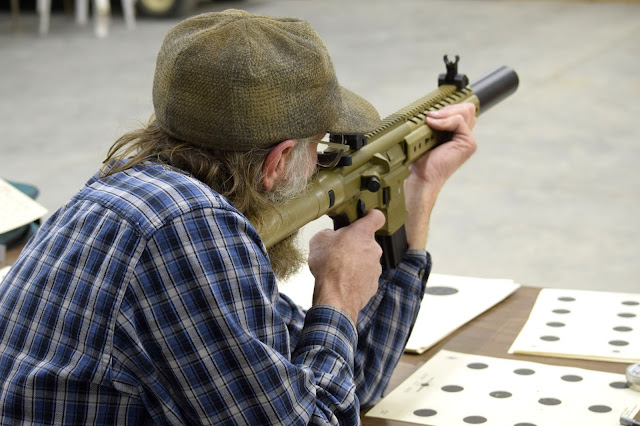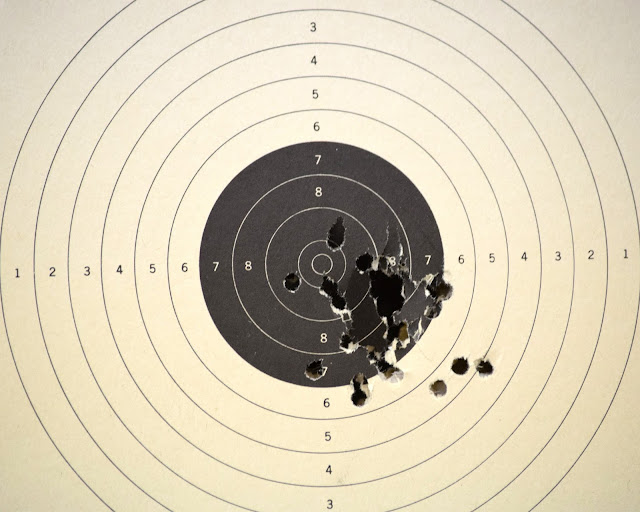After shooting the Benjamin Armada with MBUS (MAGPUL back up sights) for about a year. I decided it was time to take my “irons” to next level. Why? Because I am not good changing elevation with the front sight. Especially when I am in prone and confined by a shooting coat and a sling.
Now the scene dissolves to firing line. I am struggling to raise my 50 yard sight in group from the bottom edge to the center of the black when I learned that match time waits for no man.
“Is the line ready”
“Not ready on 3”!
“YOU are not READY. How can this possibly be, SHOOTER NUMBER THREE ”?
“Please forgive me, Mr. Range Officer, Sir. I am just a poor air gunner who doesn't know up from down. WAHHHHHHH”!
You get the idea.
After 40 years of changing elevation on the rear sight, the front sight with its reverse movement (raise the front sight to lower the impact), and finding that the little elvaton tool was in my gun bag behind the firing line was more than I wanted to put up with. Don’t get me wrong, the MBUS sights are great. They held a 50 yard zero no matter how many times I folded them up and down, and the rear has the flip up small aperture that target shooters love, but on that day they weren't helping.
I tried holding a little higher. The front post disappeared into the black target and I sent a lot of shots too high to score.
The Armada has a long Picatinny rail that is just right for mounting the MBUS. To get windage and elevation I needed a new rear sight and at the same time replace that front post with an aperture. There are sight sets for AR-15 “space guns” (used in national match competition), but a set with mounting brackets are on the south side of $500.
Sights in my budget fit on a receiver grooved for tip off mounts, and as far as I could find, there aren't any adapters from Picatinny to tip off. Sunk again.
Looking further, I found a sight set from Airforce that could be attached using a Weaver compatible scope mount. On my .22 Armada I found that the front mount had to be between 0.10” and 0.15” lower to get a zero at 50 yards.













